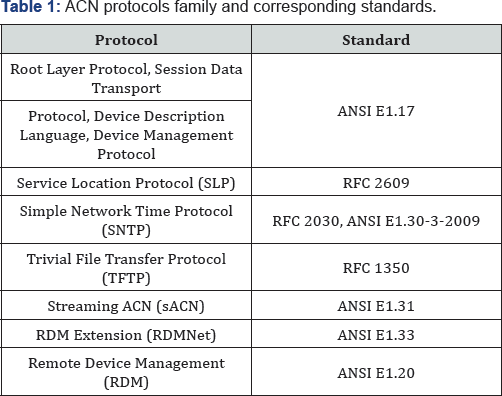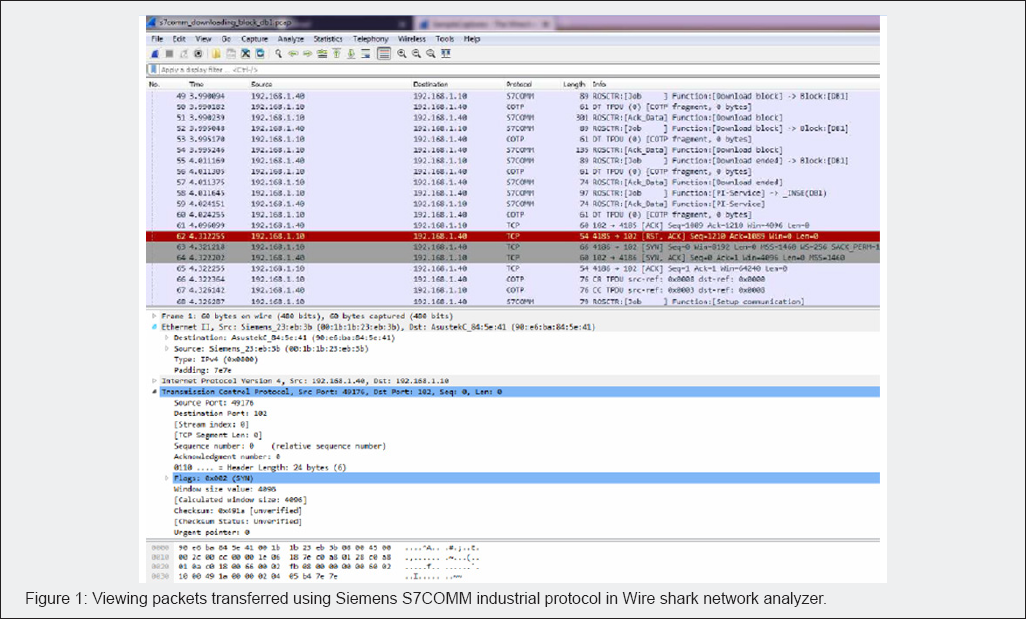Juniper Publishers Brief Industrial Networks Data Transfer Protocols Characteristics Analysis
Juniper Publishers - Open Access Journal of Engineering Technology
Authored by : Vladlen Shapo
Keywords
Keywords: Industrial networks; Protocols; Tunnelling; Internet; Control Networks
Abbreviations:
IoT: Internet of Things; IIoT: Industrial Internet of Things; ACN:
Architecture for Control Networks; AYIYA: Anything In Anything; CIP:
Common Industrial Protocol; ODVA: Open Device Net Vendors Association;
DNP3: Distributed Network Protocol Version 3
Opinion
During last 5-7 years in industry, at the different
kinds of transport, in energetic field, etc. are very actively
implementing data exchange technologies between separate devices, device
groups and networks. These technologies based on Industry 4.0 (4th
industrial revolution), IoT (Internet of Things), IIoT (Industrial
Internet of Things) concepts. In accordance with these concepts a lot of
different devices became smart, possessing of own CPUs, memory and
different wired and wireless interfaces for external data exchange. Some
of them (like complex PLCs) allow to unite different industrial network
segments, having sufficient productivity and much lower cost compared
to computers [1].
From the beginning of 90th years of 20th
century in industry are very popular some protocols and data transfer
technologies, most known are ASi, ProfiBus, Field Bus, HART, Mod Bus,
CAN, BAC and so on. But in connection with Internet development and
forth coming of absolutely new challenges were created some protocols,
based on TCP/IP. These protocols allow to perform remote control of
complex technical systems for enhancement of control quality, decreasing
response time for force majeure situations and cost for control and
exploitation of such systems. Protocols ProfiNet, Mod Bus/TCP,
Ethernet/IP, Ether CAT became well known; they are compatible with
previous generations, but allow to solve fundamentally new tasks. But in
some situations by cost/productivity ratio win protocols and
technologies, which don't have wide spread, but firmly hold theirs
niche. Some of them are described below.
ACN (Architecture for Control Networks) is network control protocol, initially destined for entertainment industry [2]. It has open source code and maintains some subordinate protocols (Table 1).

AYIYA (Anything In Anything) is network protocol for tunnelling between IP-networks and controlling there [3].
Very often it's used for IPv6 packets transit through the networks
based on IPv4 protocol. Network security is provided with absence of
addresses and content of tunnelled packets falsification possibility. At
least one of two tunnel endpoints allows mobile devices connecting.
CIP (Common Industrial Protocol) is the set of standards [4],
which are maintained by Open Device Net Vendors Association (ODVA). CIP
extensions are CIP safety, CIP Sync and CIP Motion protocols. CIP
contains full set of requirements and possibilities
for complex automation systems and their subsystems development from
following sides: control, information security, motion organizing,
informing. Some most important protocols and industrial data transfer
technologies are based on CIP as well and briefly described below.
EtherNet/IP is open industry protocol, which uses
standard Ethernet chips and cable systems, based also on IEEE 802.3
standard, and serve for input/output real time data exchange and
information messages in Device Net and Control Net industrial networks.
CIP provides common application level between networks, which doesn't
depend on media (cable system). It allows to perform direct routing CIP
messages in Ether Net/IP, Control Net and Device Net networks.
Depending on application requirements EtherNet/IP
network may be stand alone or combined with Device Net or Control Net
networks for additional flexible information and control services
realization. EtherNet/IP transfers big user, configuration and
input/output data volumes in the same high speed network; tightly
associates technological and corporate operations; facilitates technical
maintenance expenses decreasing thanks to existing network resources
and technical facilities using; allows to commercial and industrial
technological levels to coexist in the same network; works with TCP/IP
and HTTP protocols.
DNP3 (Distributed Network Protocol, version 3) is a set of communication protocols [5],
which are used for data transfer between components in automation
systems. It's developed for communications between different types of
equipment for data acquisition and control and described in IEEE 1815
standard. In SCADA systems DNP3 is used by SCADA master stations
(control centers), Remote Terminal Units (RTU) and different Intelligent
Electronic Device (IED). It uses 3 levels of OSI model (data link,
transport and application) and contains Secure Authentication v5
mechanism, which allows to master or remote DNP3- system uniquely
determine, that connection is established with legitimate user or host,
but not with malicious user.
HART-IP (Highway Addressable Remote Transducer) protocol [6]
based on standard Ethernet IEEE 802.3 hardware and cable systems
(twisted pair and fiber optics) and with Wi-Fi IEEE 802.11 equipment,
that's why it's possible to use it with standard network switches,
routers, access points, cables and connectors. It may be used in
redundant mesh or ring topologies and with PoE (Power over Ethernet)
power supply standard by twisted pair Possible data transfer rates are
10Mbps, 100Mbps and 1Gbps. HART network, including devices working with
Wireless HART protocol, is compatible with office and industrial
LAN-switches, fiber optics media converters, Wi-Fi access points and
equipment. Compatibility with classic HART protocol allows to put
corresponding gateways into action and to work with classic analogue
4-20mA technologies. Using IP as base interaction protocol allows
HART-IP to work in the same network together with multiplicity of
protocols, based on IP and Ethernet (Figure 1).

More than 60 millions devices with HART protocol
supporting are installed in the world. HART over Ethernet or HART-IP
widen HART accessibility in local internal industrial networks with
interconnection with corporate networks and ERP (Enterprise Resource
Planning) software.
Variables and diagnostic data in HART are
encapsulated in HART-IP packets. It allows to realize real time
processes in existing corporate networks and to use corporate VPN
(Virtual Private Networks).
For more articles in Open Access Journal of
Engineering Technology please click on:
https://juniperpublishers.com/etoaj/index.php
To read more...Fulltext please
click on:
https://juniperpublishers.com/etoaj/ETOAJ.MS.ID.555561.php




Comments
Post a Comment